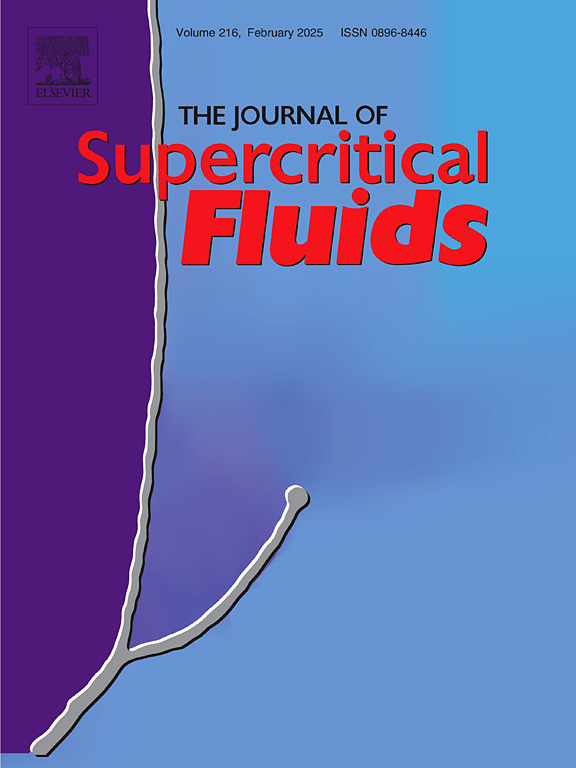Comparative analysis of supercritical-based and chemical-based decellularization technique for meniscus tissue
IF 3.4
3区 工程技术
Q2 CHEMISTRY, PHYSICAL
引用次数: 0
Abstract
The increasing prevalence of meniscus injuries highlights the critical need for the development of effective repair strategies. Currently, there is ongoing exploration of materials possessing microscopic and macroscopic characteristics akin to authentic meniscus tissue. In this study, meniscus tissue was subjected to a comparative evaluation of two different decellularization techniques which one of these involved conventional decellularization technique; one novel approach involved the utilization of supercritical carbon dioxide (scCO₂) technology on meniscus tissue. All decellularized tissues underwent biochemical, histological, microscopic, mechanical and cytotoxic evaluations. The optimized method, combining physical pretreatment, enzymatic agitation with trypsin agent, and chemical agitation with SDS agent, achieved a remarkable reduction of 82 % in genomic DNA content. Physical pre-treatment in scCO₂ decellularization facilitated enhanced penetration depth with trypsin, resulting in optimal group demonstrating a 76 % reduction in DNA content. While histological examinations and biochemical analyses indicated no alteration in collagen quantities, the conventional decellularization group exhibited a 42 % decline in GAG content, whereas the scCO2 group showed a 58 % decrease. Compressive modulus decreased from 22.8 ± 0.91 MPa in decellularized tissues to 15.26 ± 0.28 MPa in conventionally decellularized scaffold and 14.49 ± 0.48 MPa in scCO2 decellularized tissue, attributed to GAG destruction. Cytotoxicity assessments of the examined tissues revealed cell viability levels exceeding 75 % in both groups. Both approaches demonstrate potential for producing high-quality biomaterials; nevertheless, further research endeavors may lead to enhancements in the extracellular matrix preservation, mechanical characteristics, and facilitation of biological responses using supercritical fluid-based methodologies.
求助全文
约1分钟内获得全文
求助全文
来源期刊

Journal of Supercritical Fluids
工程技术-工程:化工
CiteScore
7.60
自引率
10.30%
发文量
236
审稿时长
56 days
期刊介绍:
The Journal of Supercritical Fluids is an international journal devoted to the fundamental and applied aspects of supercritical fluids and processes. Its aim is to provide a focused platform for academic and industrial researchers to report their findings and to have ready access to the advances in this rapidly growing field. Its coverage is multidisciplinary and includes both basic and applied topics.
Thermodynamics and phase equilibria, reaction kinetics and rate processes, thermal and transport properties, and all topics related to processing such as separations (extraction, fractionation, purification, chromatography) nucleation and impregnation are within the scope. Accounts of specific engineering applications such as those encountered in food, fuel, natural products, minerals, pharmaceuticals and polymer industries are included. Topics related to high pressure equipment design, analytical techniques, sensors, and process control methodologies are also within the scope of the journal.
 求助内容:
求助内容: 应助结果提醒方式:
应助结果提醒方式:


